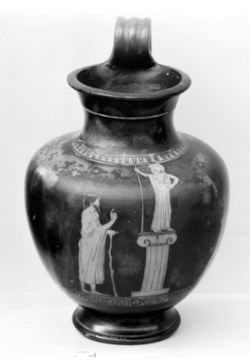Before Mimesis. Reflections on the Early Greek Technologies of Looking
Abstract
Material agency has been puzzling archaeologists for almost three decades now. The idea that artifacts, a priori perceived as passive and inert ‘creations’ subject to human volition, have the capacity to interact with their makers, users, or viewers may be seen as a challenge to archaeologists and their inherently humanist discipline. Classical archaeology, and the study of Greek and Roman art in particular, seem to have been avoiding the issue, choosing instead to privilege artistic agency or – in more recent years – a cultural-historical discourse primarily informed through linguistics and sociology. This paper explores the concepts of materiality, agency, and personhood as cultural mediators in order to investigate the ways Greeks interacted with the images they created. Through a number of case studies borrowed from the wider repertoire of early Greek ‘art’ it is argued that artifacts are invariably conceived as animate entities, at least in early Greece; moreover, that technologies of representation in early Greek art (what art historians understand as ‘styles’) are devised and promoted as cultural agents within Greek society.

Full Text:
PDFDOI: http://dx.doi.org/10.26247/aura3.3
Refbacks
ISSN: 2623-3428 (digital), 2623-3436 (print)
© 2018-2020 National and Kapodistrian University of Athen, Department of History and Archaeology.



